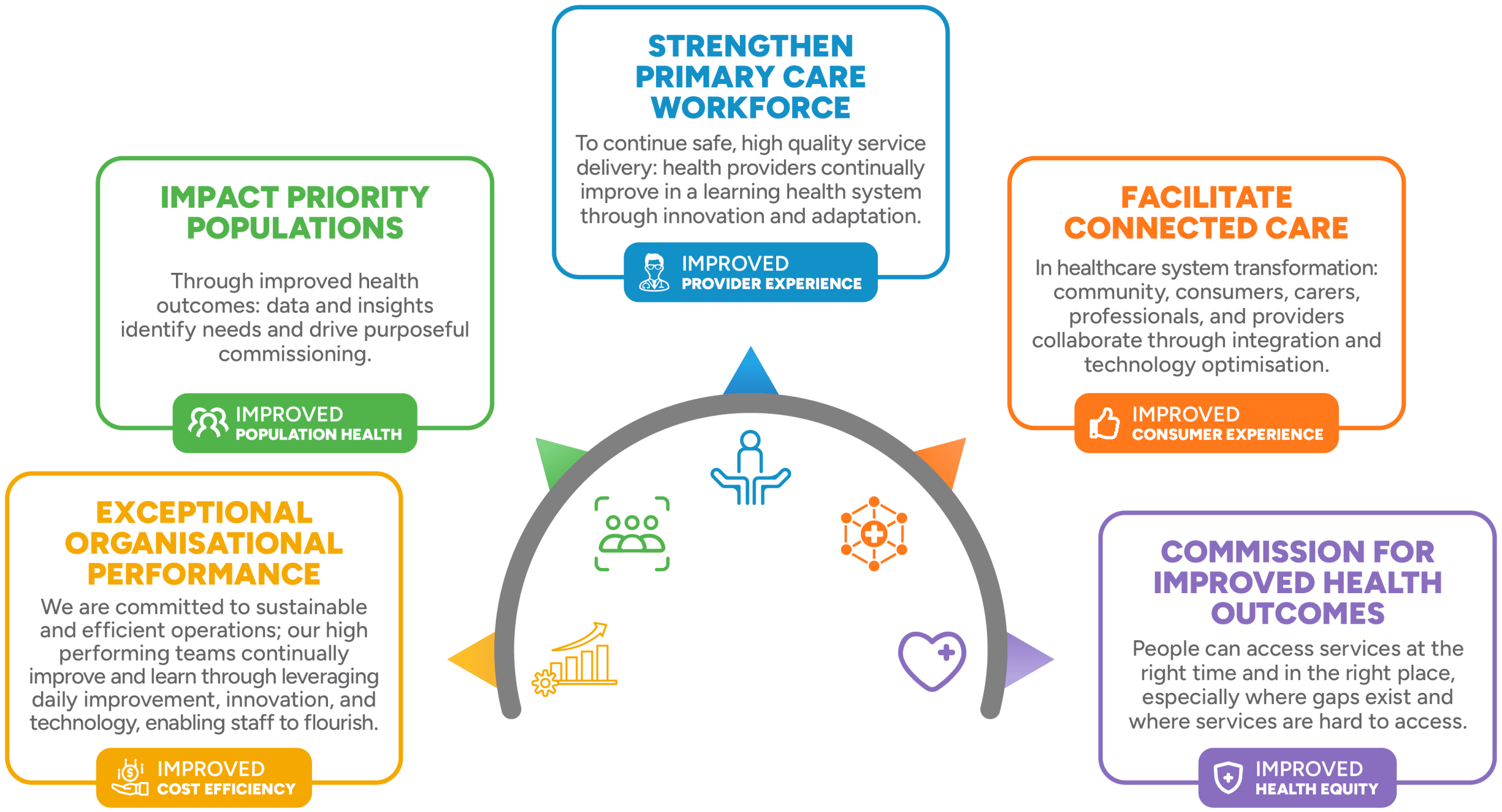Gippsland PHN
Gippsland PHN’s vision and strategic purpose is for a measurably healthier Gippsland. We recognise we must think beyond health to achieve this vision and strategic purpose, and have an impact at a population health level.
Gippsland PHN’s vision and strategic purpose is for a measurably healthier Gippsland. We recognise we must think beyond health to achieve this vision and strategic purpose, and have an impact at a population health level.
A measurably healthier Gippsland

Commissioned service performance and value for money is demonstrated
Environmental, Social and Governance responsibilities are understood and addressed
Organisational information and data are well managed and secure
Innovation is business as usual
Gippsland PHN staff are capable, engaged, and empowered to produce excellent outcomes
Population level insights are understood, interpreted and shared
Progress against activities which advance Health Needs Assessment priorities is demonstrated
Insights inform relevant and appropriate opportunities for influence and partnership to improve population health outcomes
Impacts of, and evidence for, our investments are demonstrated
Primary Care improvement activities are highly subscribed and routine
Primary Care workforce have access to best practice training and education which is aligned to population health needs, and which supports them to work at their full scope of practice
New models for delivery of primary care are sustainable and embraced
Primary Care providers are prepared and responsive in the face of natural disasters and emergencies
Primary Care providers attract and retain staff and are supported to deliver safe, high quality services through contemporary service models
Consumers own and use their health information
Commissioning strategies facilitate partnerships between providers and sectors
Partnerships with the Local Health Service Networks result in joint plans and regional solutions that improve the delivery of patient-centred care
Primary Care providers connect to each other, with diagnostics providers, with community health, specialists and hospitals
Providers and Health Services use collaborative processes which enable connected care and improved efficiency
Service delivery commissioned to address priority populations and health needs
New models of care and service delivery demonstrate Value Based Health Care principles
Integrated care service models are commissioned
Commissioned services address service gaps using technology and innovation
Modern Slavery and Human Trafficking (Modern Slavery Act 2018)
Main office
11 Seymour Street, Traralgon, Gunaikurnai Country
13 McBride Avenue, Wonthaggi, Bunurong Country
119 Main Street, Bairnsdale, Gunaikurnai Country
Gippsland PHN is committed to providing inclusive services and work environments where people of all backgrounds, sexualities, genders, cultures, spiritual beliefs, age, bodies and abilities are valued, supported and celebrated.
Gippsland PHN acknowledges the Aboriginal and/or Torres Strait Islander people/s as the traditional Custodians of Country across the Gippsland region.
We acknowledge the Aboriginal and/or Torres Strait Islander people/s continuing connection to Land, Water and Community.
We pay our respects to the Aboriginal and/or Torres Strait Islander People/s, Cultures, and their Elders past and present.
We also recognise, respect and affirm the central role played in our work by people with lived experience, their families and/or carers.
Gippsland PHN acknowledges Alfie Hudson for the healing circles artwork. Alfie is a Gunai Kurnai man and created this artwork which represents health professionals being committed to work in partnership with Aboriginal and Torres Strait Islander community members for the best health outcomes.
© 2023 Gippsland Primary Health Network. All Rights Reserved